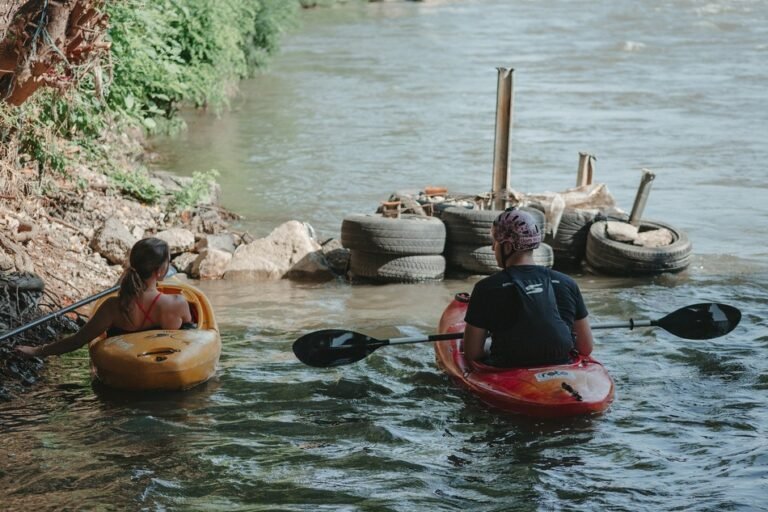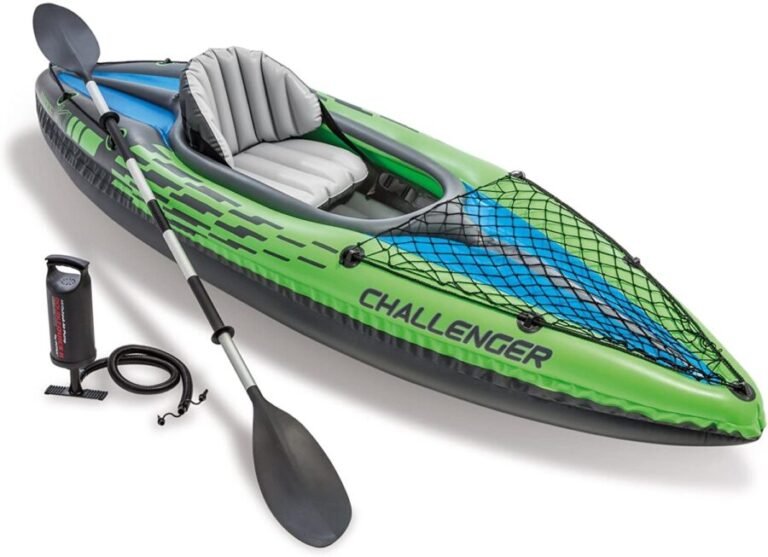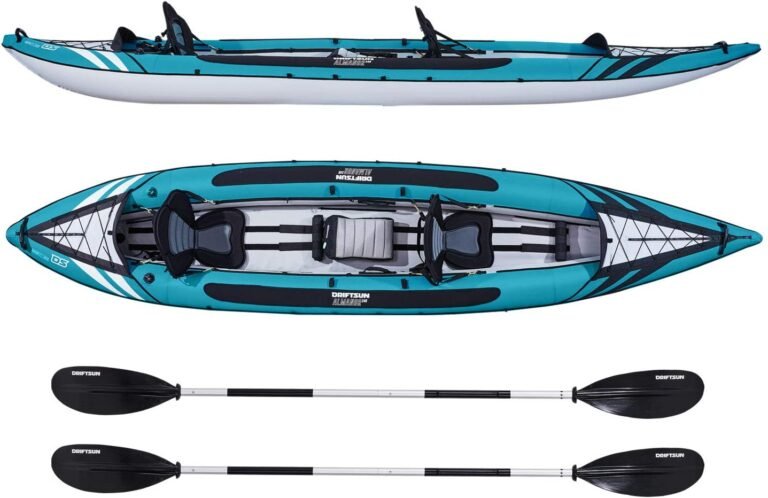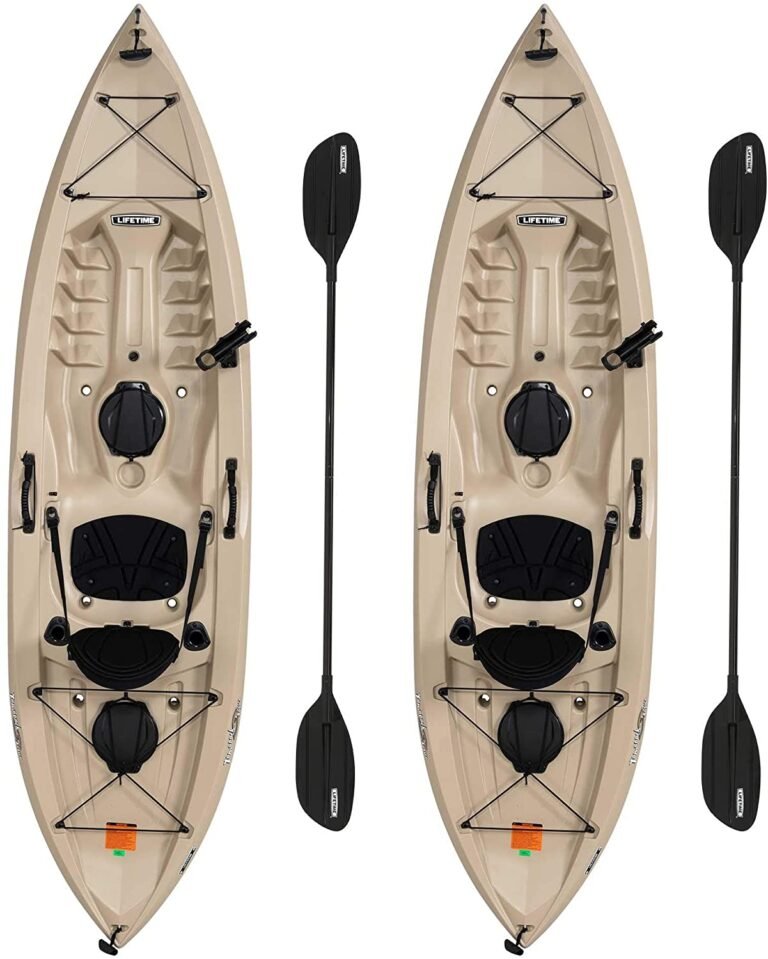What to Wear Kayaking in Summer
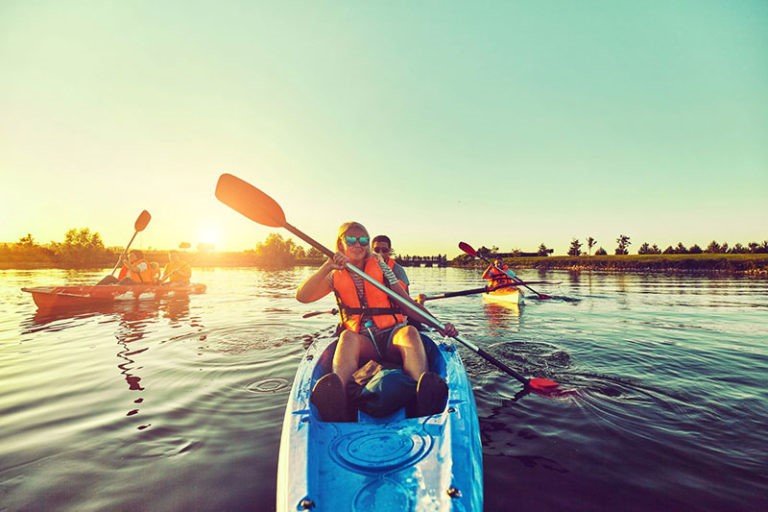
During the summer, more people are found outdoors. Water activities are on the rise as people seek exciting ways to cool off. Many recreational kayakers look forward to the summer to get the dust off their kayaks and polish their paddling skills.
As thrilling as kayaking in the summer can be, the wrong attire can easily make it uncomfortable and unenjoyable. When kayaking, it is important to dress for the water and for submerging.
Importance of Proper Clothing for Kayaking
Before we dive into the specifics of what to wear, let’s talk about why it is important to dress appropriately when kayaking in the summer.
Choosing the right attire enhances your overall kayaking experience and ensures your safety on the water. When choosing your attire, it is important to consider your safety, comfort, and protection from the weather elements.
In kayaking, safety comes first. Your choice of kayak attire has an impact on your buoyancy and ability to maneuver when faced with unexpected situations. Your clothes should allow for easy body movement and maneuvering and should not be heavy when wet.
It is important that you can swim comfortably in your kayaking clothing, especially in the summer. Kayaking under the hot summer sun can be exhausting. It is therefore important that you shield yourself from the sun and wear clothes that can keep you cool and comfortable.
This will allow you to paddle for longer periods. Now, let’s break down the essential elements of a summer kayaking wardrobe.
Clothing for Upper Body
When gearing up for a summer kayaking adventure, paying attention to your upper body attire is crucial. The upper body is more exposed when sitting in a kayak whether a sit-in or sit-on kayak.
The right clothing not only keeps you comfortable but also protects you from the sun and other elements. The key elements of upper body clothing and gear for kayaking in the summer include:
1. Breathable Moisture-Wicking Top
Kayaking in the summer requires a top made of breathable, moisture-wicking materials. This helps to keep you dry and comfortable by wicking sweat away from your skin. Avoid tops made of cotton rather choose tops made from polyester or nylon.
These materials are excellent for moisture management and are quick drying. If you would like to take a dip in the water, your swimsuit can be worn as the base layer.
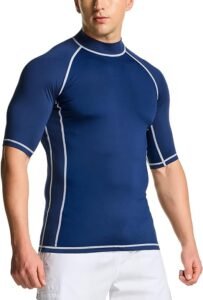
2. Rash Guards and Sun Shirts
Rash guards and sunshirts provide extra protection against sunburn and abrasions. They offer UPF (Ultraviolet Protection Factor) to shield your skin from harmful UV rays and prevent chafing. There are short-sleeved and long-sleeved options available on the market.
For men, the Athlio men’s UPF 50+ is a great option. It is long-sleeved and comes in different designs and colors. The ATTRACO women’s rashguard is a comfy UPF 50+ rated rashguard that is easy to wear and take off thanks to its front zipper.
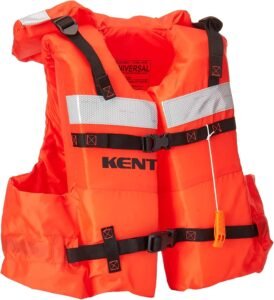
3. PFD (Personal Flotation Device)
There are different types of personal flotation devices. The life jacket style PFDs are versatile and the most commonly used for kayaking. They offer good buoyancy and come in various designs. Another type is the inflatable PFDs which are lightweight and compact.
They are ideal for experienced kayakers who want minimal bulk. In emergency situations, they require manual inflation. Foam-filled PFDs are suitable for beginners as they provide consistent buoyancy without the need for inflation.
It is important that your PFD fits snugly without being too tight. It should not ride up when you lift your hands. PFDs with adjustable straps can be tailored to suit various paddlers. For enhanced comfort, choose PFDs with padded shoulder straps and a comfy collar.
The Onyx MoveVent dynamic paddle sports CGA life vest is a lightweight option with padded shoulders that don’t restrict movement when kayaking.

4. Wide-Brimmed Hats
Wide-brimmed hats serve as a shade that keeps you cool by shielding your face and neck from direct sunlight. To protect your neck, consider wide-brimmed hats with neck flap.
When kayaking ensure that your choice of wide-brimmed hat has a chin strap that secures it in place so it is not blown away by the wind. The EINSKEY classic sun hat has a wide brim and is made of breathable materials.
It comes with a chin strap that keeps the hat in place and can be adjusted to fit your head size. This sunhat can be used by men and women. For a fully waterproof option, you can check out the EINSKEY waterproof sun hat.
5. Bandanas and Buffs for Neck Protection
Bandanas and buffs offer additional protection for your neck, which can be a vulnerable area to sunburn. They can also be used to wipe sweat from your face or cover your mouth and nose in dusty or windy conditions. For comfort, choose bandanas and buffs made of breathable, moisture-wicking materials.
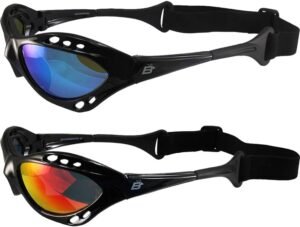
6. Sunglasses with UV Protection
Sunglasses protect your eyes from the sun’s glare and harmful UV rays that reflect off the water. Opt for sunglasses with polarized lenses to reduce glare and improve visibility on the water. To secure your sunglasses and prevent them from falling into the water, a retainer strap can be used.
Lower Body Apparel
When kayaking, the lower body is relatively protected, especially in a sit-in kayak. For summer kayaking, the clothes for your lower body should be comfortable and functional.
Your choice of clothing and footwear can greatly enhance your overall kayaking experience. Let’s explore the essential elements of lower body attire and footwear for kayaking in the summer.
1. Quick-drying shorts or pants
Your lower body is in constant contact with the kayak, and splashes of water are inevitable. Choose quick-drying materials to stay comfortable throughout your adventure.
Depending on personal preference, you can choose pants or shorts made of polyester or nylon. Shorts made of nylon or polyester prevent chafing and are fast-drying.
Shorts/pants should allow for unrestricted movement and come with adjustable waistbands, and mesh-lined pockets for enhanced comfort and flexibility.
2. Footwear
There are different footwear options for kayaking. The neoprene booties offer good insulation, protection, and excellent traction. They keep the feet warm when wet and prevent blisters and abrasions, neoprene booties are great for kayaking in cooler waters.
Water shoes or sandals are more suitable for kayaking in warmer waters. Select one that provides toe protection and has good drainage. You don’t want water pooling inside your shoes. If kayaking in rocky or rough terrain, consider footwear with sturdier soles for extra protection.
Environmental Considerations
Understanding the environment you’ll be kayaking in is crucial for making informed clothing and gear choices. Here are some environmental factors to consider:
1. Sun Exposure
Prolonged sun exposure can lead to sunburn, heat exhaustion, and skin damage. Even in the summer, the intensity of sun radiation varies depending on location. When planning your kayaking outfit in the summer, it is important that your clothing choice can protect you from harmful radiation.
Choose sun-protective clothing, including a wide-brimmed hat and sunglasses with UV protection. Apply sunscreen liberally to exposed skin.
2. Water Temperature
When kayaking, dress for the water temperature rather than the air temperature. Cold water can lead to hypothermia, even in warm weather, if you get wet.
If kayaking in cooler waters, consider wearing a wetsuit or a dry suit. Always carry extra layers in case of sudden temperature drops.
3. Wind and Weather Conditions
Strong winds and sudden weather changes can make kayaking challenging and dangerous. Winds can also make the water and air temperatures feel cooler.
Check weather forecasts before your trip and be prepared with appropriate clothing, including a waterproof jacket, to stay dry in case of rain.
Layering Techniques For Summer Kayaking
Layering is a fundamental concept in kayaking and summer kayaking is not excluded. It offers numerous benefits that enhance both comfort and safety during your kayaking adventures. A well-structured layering system regulates body temperature and keeps you comfortable.
Benefits of Layering in Summer Kayaking
Some have the misconception that layering in summer kayaking is not necessary. However, layering serves several crucial purposes when kayaking in the summer.
- Temperature Regulation: Summer days can range from scorching hot to cooler evenings. Layering allows you to adjust your clothing to maintain a comfortable body temperature throughout your kayaking adventure.
- Moisture Management: When paddling in the summer, sweating is expected. Layering keeps you dry by wicking away sweat from your body which reduces the risk of chafing and discomfort.
- Versatility: With a layered system, you can easily adapt to changing weather conditions or water temperatures by adding or removing layers as needed.
Let’s look at the roles the different layers play to achieve the above purposes.
Base Layer
The base layer is your first line of defense against sweat and moisture. It should efficiently wick sweat away from your skin and dry quickly.
Choose base layer garments made of synthetic materials like polyester or nylon. These fabrics excel at moisture management and are comfortable against the skin. In the summer, your swimwear can be your base layer.
Insulation Layer (Optional)
In the summer, you might not need an insulation layer. The insulation layer provides extra warmth if needed, especially during cooler evenings or in the presence of wind.
Lightweight fleece or synthetic materials offer insulation without adding bulk. They trap warm air close to your body. This layer can be easily added or removed as the temperature changes.
Outer Layer
The outer layer serves as a barrier against rain, wind, and splashes from the water. Go for waterproof and breathable jackets or pants. These keep you dry from external moisture while allowing sweat and moisture to escape, preventing overheating.
If you are more likely to encounter splashing and immersion as in whitewater kayaking, consider a spray skirt. A spray skirt covers the cockpit of your kayak and prevents water from entering. You can also get a dry top for whitewater kayaking. It is waterproof and keeps water out.
Wetsuit
The summer is the best time to use a wetsuit when the water is cool but not cold. A wetsuit provides insulation by trapping a layer of water between your body and the suit. This keeps you cool and regulates your body temperature.
Accessories for summer kayaking
In addition to your clothing and core gear, a selection of accessories can significantly enhance your summer kayaking experience.
These accessories serve various functions, from protecting your hands to safeguarding your personal items. Let’s explore the essential accessories for summer kayaking and their importance.

Gloves and Hand Protection
You want to pay attention to your hands when kayaking in the summer. Kayaking often involves repetitive hand movements, which can lead to blisters and discomfort. Wearing gloves provides grip on the paddle, reducing the risk of blisters.
They also offer sun protection for your hands. Choose lightweight, breathable gloves made of quick-drying materials. Look for options with UPF (Ultraviolet Protection Factor) for added sun protection.
UV-Protective Clothing
Ultraviolet (UV) radiation from the sun can be harmful to your skin, even on overcast days. UPF-rated clothing provides reliable protection against harmful UV rays.
It complements sunscreen and helps reduce the risk of sunburn and long-term skin damage. Consider wearing UPF-rated long-sleeved shirts and pants to protect your arms and legs from sun exposure.
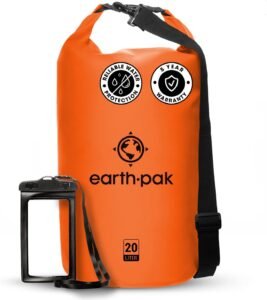
Water-Resistant Bags and Cases
When kayaking, your gadgets should be kept dry. You may want to document your trip hence, may need to carry a camera. Water-resistant bags and cases keep your belongings safe from water splashes, accidental submersion, and the elements.
Look for dry bags, waterproof phone pouches, and cases designed to keep your gear dry. Ensure they have secure closures like roll-tops or waterproof zippers.
Sunscreen and Skin Care
Taking care of your skin is paramount when engaging in outdoor activities in the summer. When kayaking, there is prolonged exposure to the sun which can lead to sunburn and long-term skin damage. Even on cloudy days, UV radiation poses a significant risk to your skin.
Sunscreen protects the parts of your body that are exposed by reducing the penetration of UV rays into your skin. This protective barrier prevents sunburn, skin aging, and reduces the risk of skin cancer.
Types of Kayaking Adventures in Summer
There are different gears for various kayaking types. It is therefore necessary to understand the various types of kayaking adventures available to make the right clothing and gear choice.
- Recreational Kayaking: Recreational kayaking is perfect for beginners and those looking for a relaxing experience. It typically involves paddling on calm lakes, slow-moving rivers, or sheltered coastal areas. For recreational kayaking, comfort is key. In addition to the kayak attires discussed earlier, a stable kayak is essential.
- Touring kayaking: Touring kayaking explores coastal areas and covers longer distances on open water. It often involves multi-day trips and may include camping along the way. In addition to the basics, touring kayakers should consider packing dry bags for their gear and clothing, as well as navigation tools such as a GPS device or compass.
- Whitewater Kayaking: Whitewater kayaking is an adrenaline-pumping experience, typically on fast-moving rivers with varying degrees of rapids. It requires advanced skills and a sturdy kayak designed for navigating turbulent waters. In addition to the essentials, whitewater kayakers need specialized gear like a whitewater helmet, a neoprene wetsuit, and a spray skirt to keep water out of the kayak.
Kayaking is a beautiful way to enjoy the summer and explore the beauty of nature. Ensuring a safe and enjoyable experience requires careful consideration of various factors, from attire to safety precautions. Proper attire is pivotal in enhancing your overall kayaking experience.

